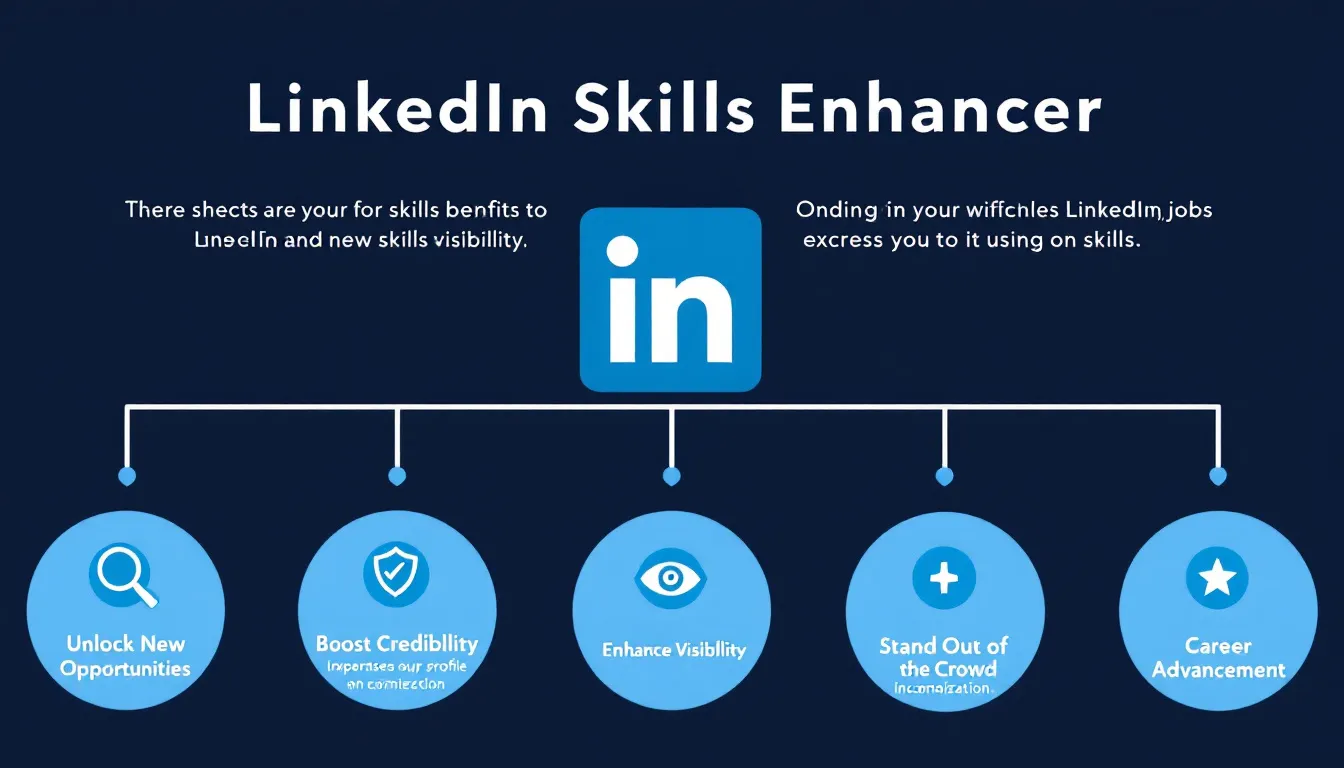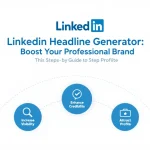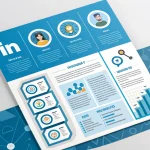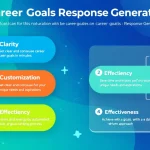Is this tool helpful?
How to Use the LinkedIn Skills Suggestion Tool Effectively
Follow these simple steps to get the most accurate and personalized skill recommendations for your LinkedIn profile:
- Enter Your Profession: Type your current role or the job you want. Examples include “Business Analyst” or “Content Strategist”.
- Describe Your Expertise: Provide a brief overview of your relevant skills and experience. For instance, “4 years in supply chain management specializing in inventory optimization and vendor relations” or “Experienced editor with a background in SEO and social media content creation.”
- Specify Your Industry (Optional): Mention the sector you work in or aim to join, like “Automotive” or “Nonprofit”. This helps tailor skill suggestions to your field.
- State Your Career Goals (Optional): Share your professional aspirations such as “Advance to senior management in logistics” or “Develop expertise in video marketing.”
- Generate Suggestions: Click the button to receive a curated list of LinkedIn skills suited to your profile and goals.
- Review and Copy: Look over the suggested skills and use the copy feature to easily add them to your LinkedIn profile.
Introducing the LinkedIn Skills Suggestion Tool: Boost Your Profile With Targeted Skills
The LinkedIn Skills Suggestion Tool helps you refine your profile by recommending skills that align with your current profession, expertise, industry, and career objectives. Adding the right skills increases your chances of appearing in recruiter searches and showcases your professional strengths.
Using this tool saves you time and effort by automatically generating relevant and up-to-date skill recommendations. It draws from the latest industry trends and hiring patterns, ensuring your LinkedIn profile stays competitive and appealing.
Why Relevant LinkedIn Skills Matter
Your skills section on LinkedIn acts as a spotlight on what you do best. Recruiters often search LinkedIn by skills, so including pertinent and current ones improves your profile visibility.
However, choosing the right skills can be challenging. This tool guides you by suggesting high-impact skills tailored specifically to your background and future goals.
Practical Uses of the LinkedIn Skills Suggestion Tool
Here’s how you can apply the tool in real professional situations to maximize your LinkedIn profile effectiveness:
Example 1: Mid-Level Designer Pivoting to UX Research
- Profession: Graphic Designer
- Expertise: 6 years in visual design, skilled in Adobe Suite and branding
- Industry: Creative Agencies
- Career Goals: Shift focus toward user experience research
The tool might suggest skills like Usability Testing, User Interviews, Persona Development, Interaction Design, and User Journey Mapping. Adding these helps demonstrate your evolving skill set to recruiters in UX roles.
Example 2: Sales Manager Seeking Opportunities in SaaS Industry
- Profession: Sales Manager
- Expertise: 5 years managing B2B sales teams, proficient in CRM tools
- Industry: Software-as-a-Service (SaaS)
- Career Goals: Lead sales operations in a fast-growing tech startup
Suggested skills might include Salesforce, Lead Generation, Account Management, Customer Success, and Sales Strategy. This ensures your profile reads well for SaaS recruiter searches.
Example 3: Educator Expanding Into E-Learning
- Profession: High School Teacher
- Expertise: 10 years teaching literature and language arts
- Industry: Education Technology
- Career Goals: Transition into e-learning content development
Skill recommendations could include Instructional Design, eLearning Development, Curriculum Planning, Learning Management Systems (LMS), and Virtual Classroom Facilitation. These skills highlight your adaptability and readiness for the e-learning sector.
The Benefits of Tailored LinkedIn Skill Recommendations
1. Boosted Profile Visibility
Targeted skills improve your profile’s ranking in LinkedIn search results, making recruiters and employers more likely to find you.
2. Alignment with Current Market Demand
Skill suggestions reflect the latest industry trends and in-demand capabilities, helping you stay competitive.
3. Support for Career Transitions
By blending your existing skills with your career goals, the tool highlights transferable skills that suit new professional paths.
4. Time Efficiency
Rather than researching keywords and skills on your own, get a curated list instantly, saving you effort and streamlining profile updates.
5. Enhanced Networking Potential
Relevant skills attract connections in your field and increase the chances of endorsements, reinforcing your professional credibility.
Frequently Asked Questions About LinkedIn Skills Updates
How often should I update my LinkedIn skills?
Update your skills every 3-6 months or whenever you develop new abilities or shift your career focus. Regular updates keep your profile relevant and attractive.
How many skills should I include on my LinkedIn profile?
Aim for 15-20 relevant skills. LinkedIn allows up to 50, but prioritize quality and relevance to your profession and goals over quantity.
Can I customize the suggested skills?
Yes. Use the suggestions as a guide but adjust the wording to better fit your experience or industry terminology where needed.
How do optional fields affect the recommendations?
Including your industry and career goals refines skill suggestions to match your professional context more closely, making them more targeted and effective.
Is this tool suitable for career changers?
Absolutely. Input your desired profession and describe transferable skills so the tool can suggest skills that bridge your current experience with your new career path.
How does the tool stay current with changing skill demands?
The tool regularly updates its skill database to reflect emerging trends and evolving job market demands. This guarantees your profile emphasizes skills that recruiters actively seek.
Important Disclaimer
The calculations, results, and content provided by our tools are not guaranteed to be accurate, complete, or reliable. Users are responsible for verifying and interpreting the results. Our content and tools may contain errors, biases, or inconsistencies. Do not enter personal data, sensitive information, or personally identifiable information in our web forms or tools. Such data entry violates our terms of service and may result in unauthorized disclosure to third parties. We reserve the right to save inputs and outputs from our tools for the purposes of error debugging, bias identification, and performance improvement. External companies providing AI models used in our tools may also save and process data in accordance with their own policies. By using our tools, you consent to this data collection and processing. We reserve the right to limit the usage of our tools based on current usability factors.







